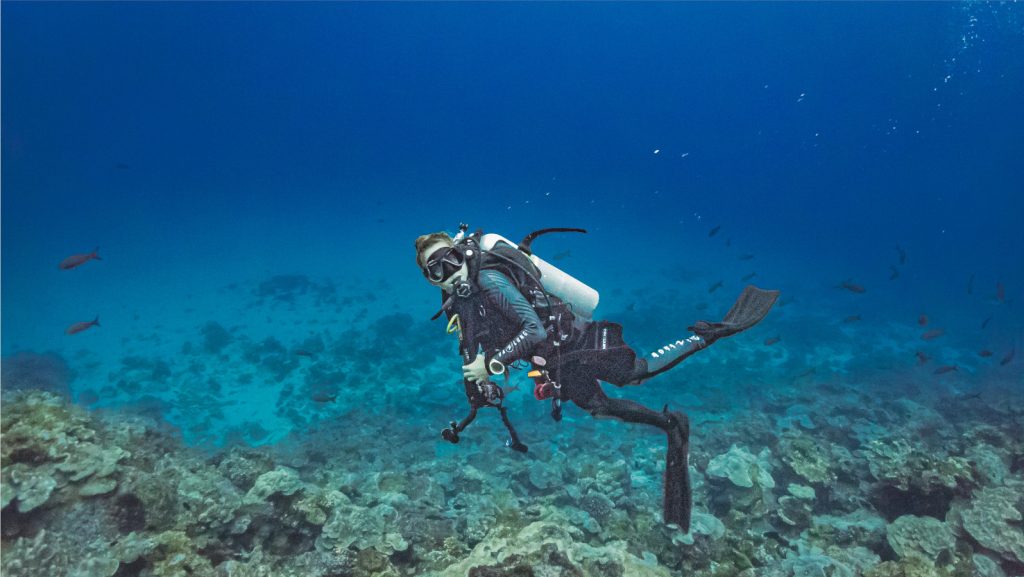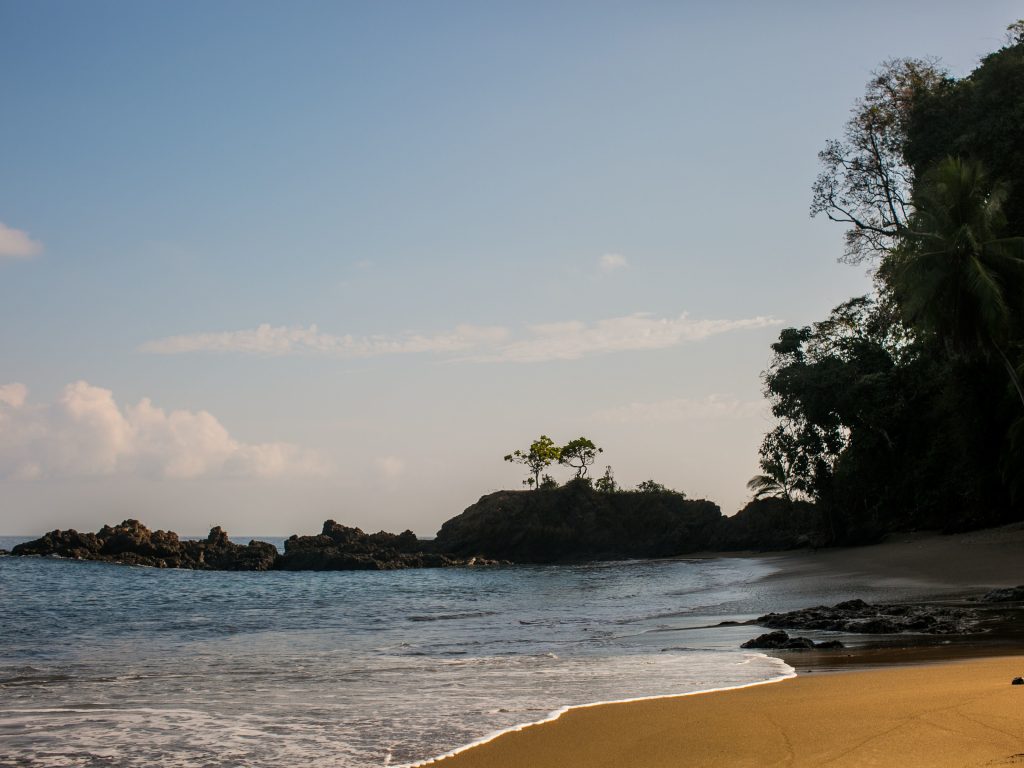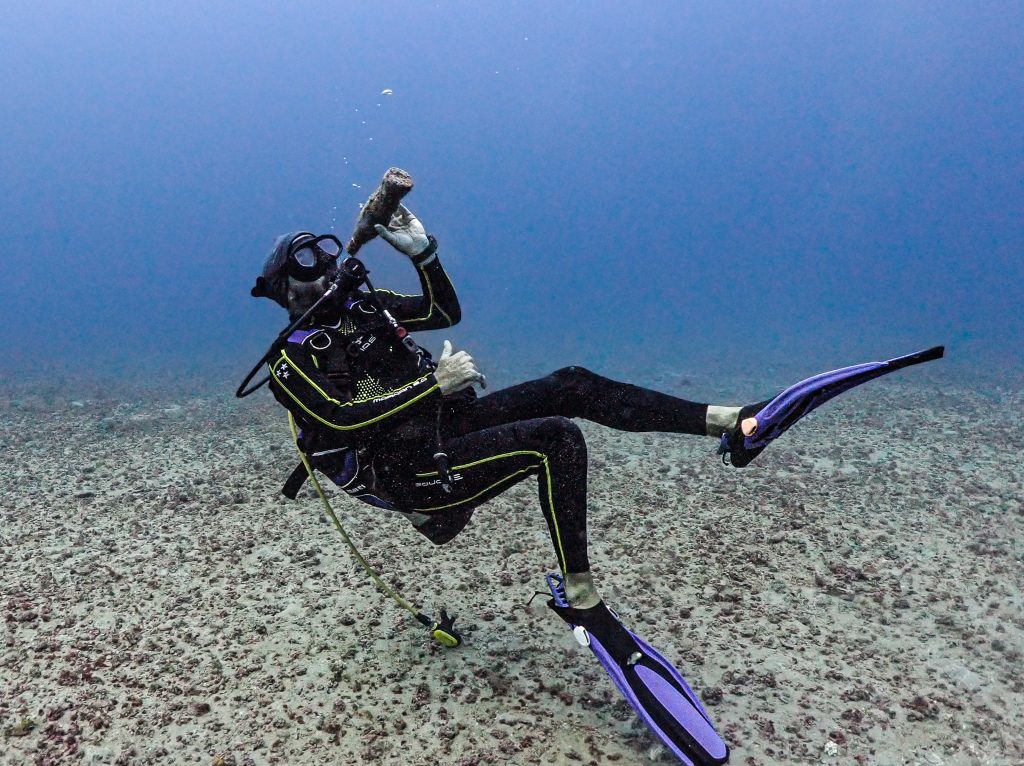Hello, my name is Roberto Vargas and I’m a passionate Costa Rican diver. I’ve been working in various dive centers for 15 years and currently own my own business in this exciting field. I’ve decided to write this article to guide anyone interested in visiting Costa Rica for diving.
Costa Rica offers exceptional opportunities for diving, but it’s crucial to know where and when to dive to ensure a truly enjoyable experience. My goal is to provide useful and detailed information so that your diving adventure in Costa Rica is unforgettable.
Furthermore, I encourage anyone reading this article to feel free to contact me with any questions regarding diving in Costa Rica. I’m here to help and ensure you have the best possible experience exploring the wonderful underwater landscapes of my beautiful country.
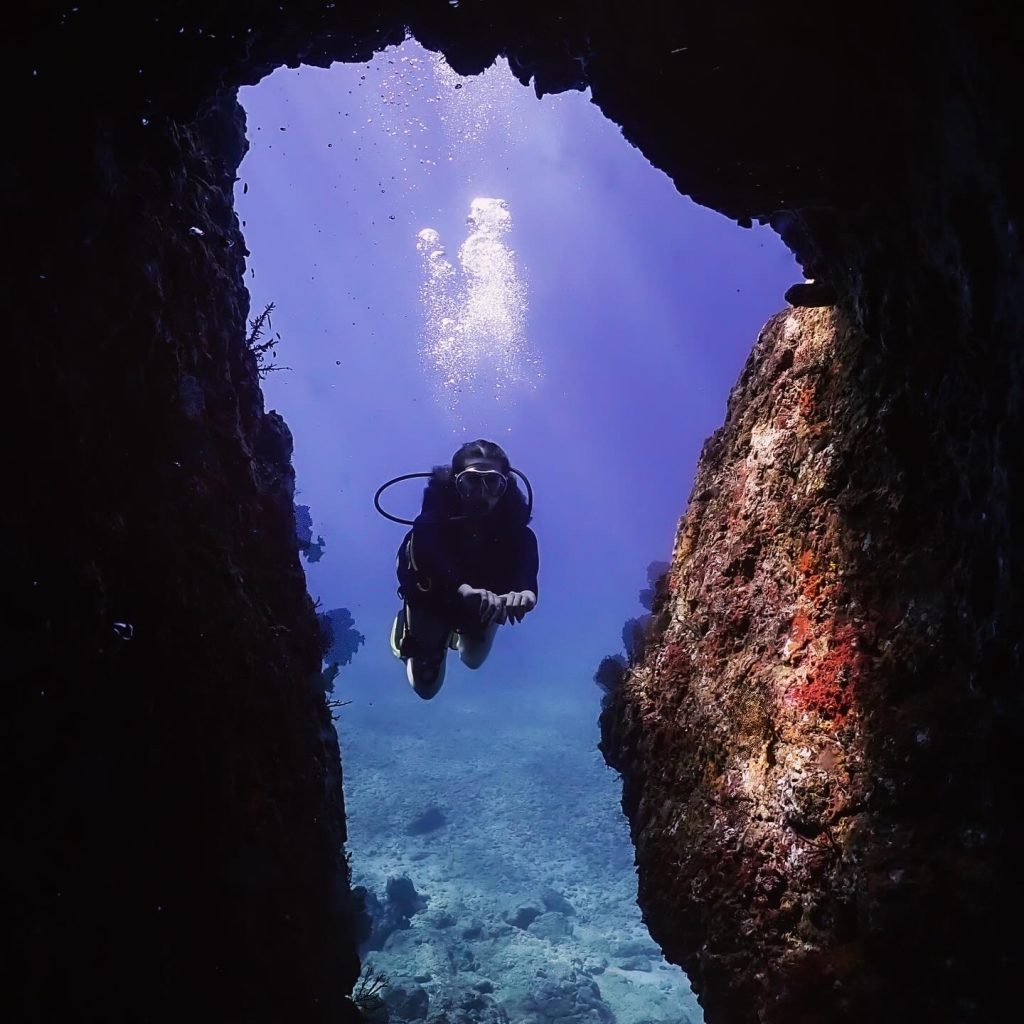
Welcome aboard to our guide on planning your diving adventures in Costa Rica! At Saltwater Connection, diving is our passion, and we excel at helping traveler divers like you map out unforgettable experiences. Our mission is simple: providing accurate, objective information tailored specifically for divers. Whether you’re a seasoned pro or just starting, we’re here to give you a comprehensive overview of diving opportunities across Costa Rica. From vibrant coral reefs to hidden shipwrecks, we’ll guide you in selecting the perfect spots that suit your preferences and needs.
This article is packed with valuable insights and practical advice to ensure you make informed decisions. Let’s dive into the world of scuba diving in Costa Rica together and equip you with all the essential details you need. Plus, count on us to assist you in securing the best pricing when planning your adventure. Ready to explore? Let’s make your diving dreams a reality!
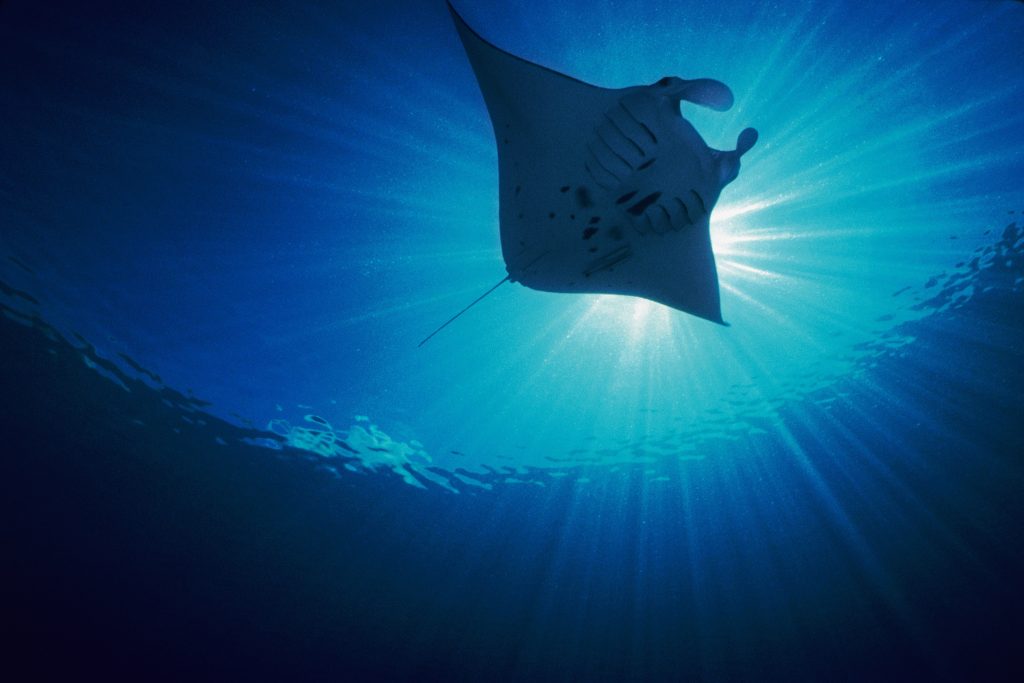
Is scuba diving in Costa Rica worth it?
Absolutely! Since I was a child, I’ve frequently heard people express their desire to visit Costa Rica, and I’ve always suspected that the natural treasures our country holds are unmatched anywhere else. However, it was diving into these waters that truly confirmed this for me. I’ve always felt immense pride in my homeland, our culture, and especially our natural resources. With a warm affection for our visitors and a deep joy in showcasing the best of our country to them, I’ve written this guide with the hope of helping others discover the wonders of Costa Rica.
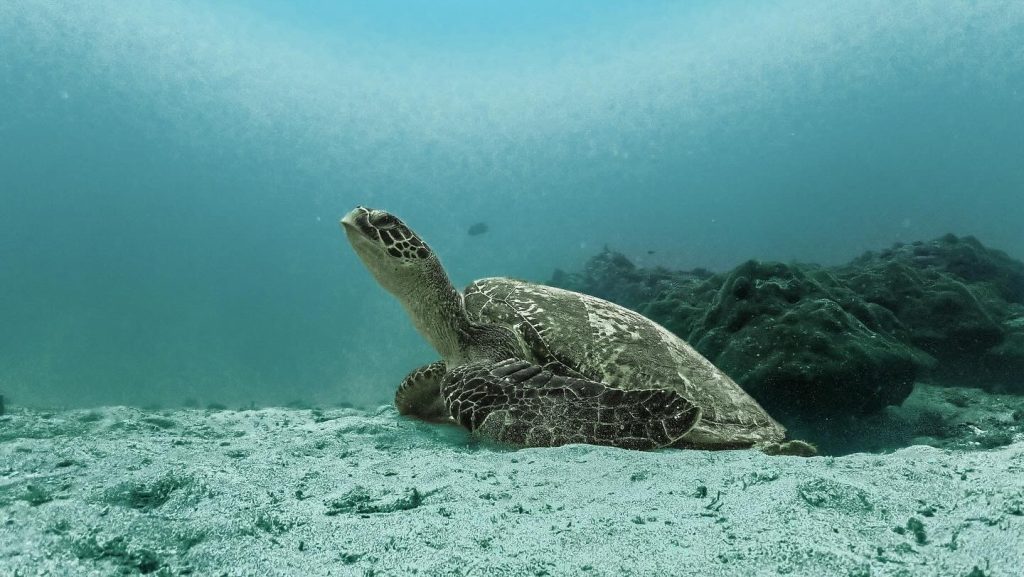
Why choose Costa Rica as your destination?
Costa Rica, despite its small size, boasts an extraordinary wealth of flora and fauna. Our forebears have made concerted efforts to safeguard this natural heritage, resulting in nearly 25% of Costa Rica’s territory being designated as protected areas. The country’s numerous national parks serve as guardians of both terrestrial and marine ecosystems, ensuring their preservation. With stringent conservation measures in place, coupled with Costa Rica’s exceptional biodiversity and inviting water temperatures, the stage is set for an unparalleled diving experience.
Indeed, diving in Costa Rica is an adventure worth undertaking. Based on my personal observations and comparisons with diving experiences worldwide, many of our clients with prior diving experience express a common sentiment of awe and gratitude after visiting Isla del Caño. This sentiment is further amplified for those who embark on a journey with us to Isla del Coco, an experience often described as life-changing.
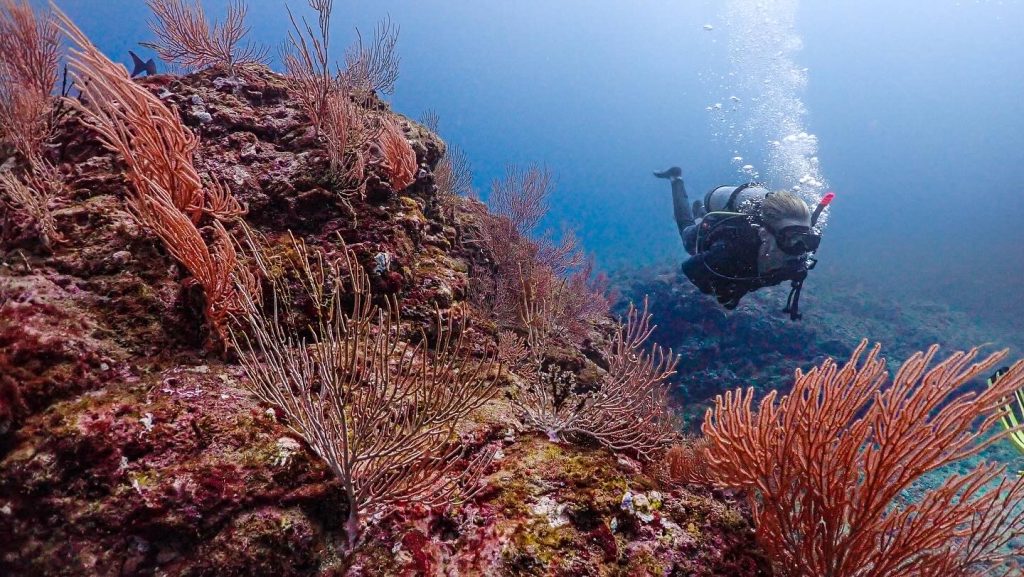
Where can I go diving in Costa Rica?
Costa Rica is blessed with access to both the Pacific Ocean and the Caribbean Sea. While diving is possible year-round in both regions, the Pacific coast is widely acclaimed for offering superior diving experiences compared to the Caribbean. On the Pacific side, you’ll encounter two underwater gems: Isla del Coco and Isla del Caño. These UNESCO World Heritage Sites are integral parts of Costa Rica’s extensive national park system, with most diving sites nestled within protected areas to ensure their pristine beauty remains untouched.
It’s safe to say that Isla del Coco and Isla del Caño offer some of the finest diving opportunities in Costa Rica. However, the country boasts numerous other equally remarkable diving sites. Most of these require boat access and organized tours.
Shore diving is generally unavailable and can be even more challenging during rainy seasons due to poor visibility. For those interested in specialized diving experiences such as cave or high-altitude diving, Costa Rica may not be the ideal destination as these activities are practiced infrequently here.
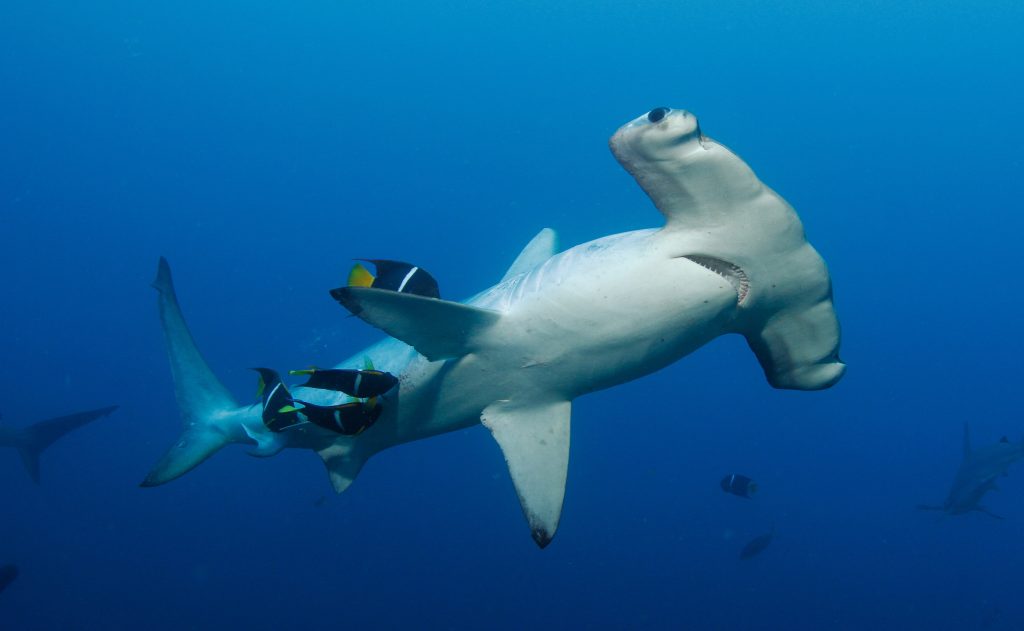
Diving the North Pacific of Costa Rica
The North Pacific region of Costa Rica refers to the coastal area in the northwest, known for its tropical dry climate. Here are three characteristics:
- Pronounced Dry Season: The region experiences a distinct dry season from December to April, with minimal or no rainfall during this period.
- High Temperatures: Temperatures are consistently high throughout much of the year. During the dry season, days are hot and sunny, often exceeding 30°C (86°F).
- Adapted Vegetation: Vegetation in this region is adapted to dry conditions, featuring drought-resistant trees and plants, including deciduous species that shed leaves to conserve water.
These features make the North Pacific of Costa Rica unique, attracting visitors with its sunny beaches and specialized ecosystems.
Diving at Bat Islands
The Bat Islands, nestled within Santa Rosa National Park, are renowned for their superb diving opportunities, especially during the bull shark observation season from June to November. This protected area offers a rich diversity of marine life and exceptional diving experiences. Depths at the Bat Islands range from 18 to 35 meters, making the use of nitrox highly recommended. Water visibility varies between 6 and 30 meters. Diving at the Bat Islands is recomended for advanced divers due to strong currents that demand technical skills, including rapid descents.
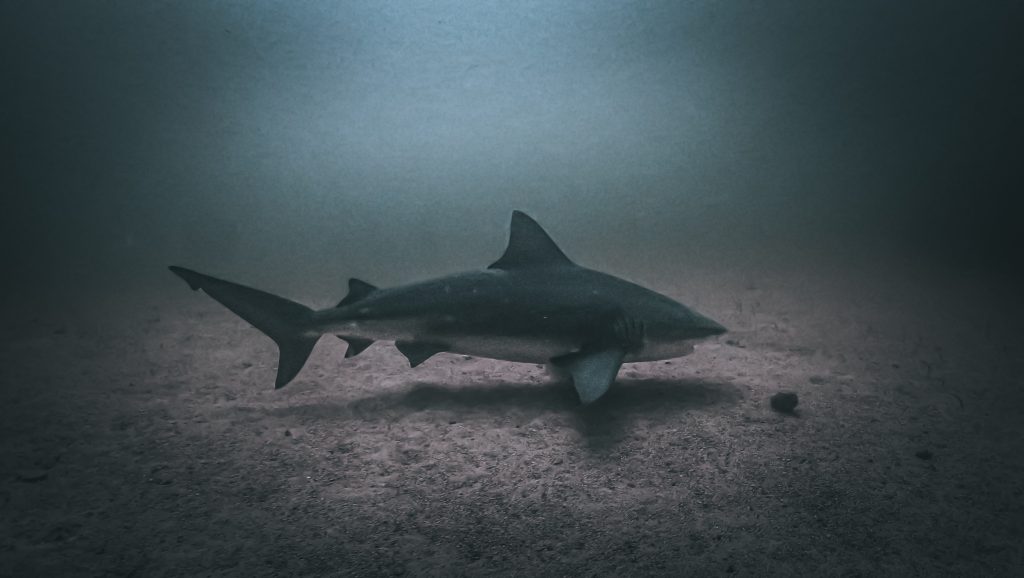
The Big Scare: The dive site known as Big Scare is undoubtedly the main attraction of the Bat Islands. After about an hour in the dive boat, you arrive at this submerged rock located at the edge of the archipelago. Upon entering the water, the surface appears murky, so it’s advisable to descend quickly to reach a depth of 25 meters and find the tranquility of the ocean floor.
The slope of the seabed inclines constantly and continues beyond the limits of recreational diving. As you descend to the thermocline, visibility may slightly decrease, but this is when the anticipation begins. Suddenly, these enormous animals emerge from the depths, and at that moment, you understand why the site is called The Big Scare. At the very least, it is an utterly thrilling experience.
Divers can stay with the sharks for as long as they wish or as long as their bottom time allows. At depths of 25 to 30 meters, using nitrox is very helpful to maximize the effort and prolong the time spent underwater.
This location offers a unique and exciting diving experience, where the stunning nature of the Bat Islands is revealed in its fullest. Ideal for those seeking unforgettable underwater adventures, Big Scare promises intense excitement and unforgettable encounters with marine life
Three Interesting highlights about the Bat Islands:
Bull Shark Studies: The Bat Islands are a hub for scientific research on bull sharks. Researchers conduct studies using acoustic tagging to monitor and understand the behavior and population dynamics of these impressive creatures.
- Acoustic Tagging: The protected area employs acoustic tagging as part of ongoing scientific efforts to track bull shark movements. This technology helps researchers gather valuable data on migration patterns and habitat use.
- Challenging Diving Conditions: Beyond its scientific significance, the Bat Islands are known for their challenging diving conditions, including rapid descents and strong currents. These conditions attract thrill-seeking divers eager to test their skills amidst the exhilarating underwater landscape.
Access to the Bat Islands is facilitated from various locations, such as Cuajiniquil and Playas del Coco. While it offers an outstanding diving experience, it’s advisable that non-diving companions or children may find it less suitable. Organized diving excursions from Playa del Coco ensure a smooth journey to the islands, approximately an hour from the coast, promising an unforgettable dive amidst Costa Rica’s stunning natural beauty.
Diving at Catalina Islands
The Catalina Islands, located in Costa Rica’s Guanacaste province, are renowned for their spectacular diving opportunities. This chain of volcanic formations rises impressively from the seabed, with depths ranging up to 40 meters.
Five Fun Facts about Catalina Island:
- Giant Pacific Manta Rays: From December to May, divers can witness the awe-inspiring Giant Pacific Manta Rays with wingspans up to 7.3 meters and weights around 1,300 kilograms. These majestic creatures are a highlight of diving at Catalina Islands.
- Diverse Marine Life: Catalina Islands boast an abundance of marine life including eagle rays, devil rays, turtles, dolphins, moray eels, and pufferfish. The rich biodiversity ensures that each dive offers a unique encounter with underwater wildlife.
- Year-Round Diving: Thanks to its tropical climate, diving is possible throughout the year at Catalina Islands. Water temperatures range from 75-85°F (24-29°C), providing comfortable conditions for divers.
- Popular Dive Sites: Roca Elefante and Los Sombreros are among the most popular dive sites at Catalina Islands, offering diverse underwater landscapes and thriving marine ecosystems.
- Best Diving Season: The best time to dive at Catalina Islands is from July to November, with September to November offering optimal visibility for underwater exploration.
To experience the wonders of Catalina Islands, divers must join organized tours departing from Playa Tamarindo or Playas del Coco. These tours typically include two dives and a full day’s excursion, providing ample opportunity to explore the vibrant underwater world of Costa Rica’s Catalina Islands. Whether you’re a seasoned diver or a beginner looking for an unforgettable adventure, Catalina Islands promise a dive experience filled with natural beauty and marine marvels.
Diving at Playas del Coco
Playas del Coco, nestled in Costa Rica’s Gulf of Papagayo on the North Pacific coast, stands out as a favored diving spot celebrated for its serene waters and abundant marine biodiversity. My first dive at Play Pen remains vivid in memory—a brief 30-minute excursion where I honed essential skills while marveling at the underwater world. Witnessing my first parrotfish that day marked the beginning of my fondness for diving in the Coco area, where every dive since has been both thrilling and brimming with marine life.
Despite the absence of extensive coral reefs and slightly cooler water temperatures compared to southern Costa Rica, Playas del Coco offers ideal conditions for novice and intermediate divers due to its minimal shore currents. The prime diving season spans from December to April, aligning with the dry season when the region enjoys hot, dry weather, particularly in summer. Thankfully, Playas del Coco’s sheltered bay ensures calm waters, facilitating easy access to nearby dive sites, many just a short 10-20 minute boat ride away.
Visibility underwater varies seasonally, peaking during high season and becoming somewhat less favorable during the low season. Nonetheless, these tropical waters harbor diverse marine life year-round, making encounters with rays, whitetip reef sharks, large schools of snappers, and playful pufferfish a common occurrence. Notable dive sites like Punta Argentina, Tortuga, and La Cruz offer explorations of volcanic formations, rocky pinnacles, and vibrant walls bustling with marine activity.
Five Interesting Facts about Playas del Coco:
- Sheltered Bay: Playas del Coco’s bay boasts calm waters year-round, providing a tranquil setting for diving and easy access to nearby dive sites.
- Year-Round Diving: Thanks to its tropical climate, diving is possible throughout the year, offering encounters with a wide variety of marine life regardless of the season.
- Depth Diversity: Some dive sites at Playas del Coco reach depths of up to 30 meters (100 feet), catering to divers of varying skill levels.
- Nutrient-Rich Waters: The nutrient-rich waters support a rich ecosystem, attracting rays, whitetip reef sharks, and large schools of snappers, enhancing the diving experience.
- Diverse Marine Environments: Divers can explore diverse underwater landscapes including volcanic formations, rocky pinnacles, and walls teeming with colorful marine life, ensuring each dive is unique and captivating.
Diving at the Central Pacific of Costa Rica
Scuba diving in the Central Pacific region of Costa Rica, encompassing Punta Leona, Playa Herradura, Playa Hermosa, and Manuel Antonio in Quepos, offers enthusiasts a diverse and rewarding underwater experience. Known for its rich marine biodiversity and accessible dive sites, this area attracts divers from around the country seeking adventure and relaxation beneath the waves.
The Central Pacific coast is home to vibrant coral reefs teeming with life, from colorful tropical fish to majestic rays and sharks. Closer to shore, Punta Leona, Playa Herradura, Playa Hermosa, and Manuel Antonio in Quepos offer diverse underwater landscapes, including volcanic rock formations, coral gardens, and underwater caves. However, it’s worth noting that the diving conditions in this region can be more challenging than in other areas of Costa Rica due to stronger currents and varying visibility.
Despite the challenges, diving here rewards adventurers with unparalleled opportunities to explore underwater volcanic formations and encounter a wide array of marine life. Each dive in the Central Pacific reveals unique ecosystems and marine wonders. The warm waters and good visibility during certain seasons make it an ideal destination, promising unforgettable encounters for divers of all levels.
Diving at Isla Tortuga Costa Rica
Isla Tortuga, consisting of two islands named Tolinga and Alcatraz, is a gem nestled in the Central Pacific near Puntarenas, Costa Rica. Accessible from Puntarenas, Curu Reserve, or Herradura, this island duo is a haven for tourists seeking sun, sand, and adventure. It’s a popular destination for families and beach lovers alike, offering a range of activities such as beach volleyball, snorkeling, and exhilarating catamaran rides. However, beneath the surface of its azure waters lies a captivating world waiting to be explored.
Diving expeditions around Isla Tortuga reveal a rich marine ecosystem where encounters with whitetip sharks and majestic eagle rays are commonplace. As a seasoned dive guide, I’ve had the privilege of leading numerous dives here, each revealing unique glimpses of marine life thriving in these pristine waters. One notable attraction for divers is the sunken ship known as the Frankling Chan Diaz, a former Costa Rican Coast Guard patrol boat resting between 18 to 25 meters deep. Over the years, I’ve observed its gradual decay, witnessing firsthand how nature reclaims its own.
Five Fun Facts about Isla Tortuga:
- Unique Wildlife: Isla Tortuga is home to animals like pigs and deer, but surprisingly, there are no monkeys inhabiting the island.
- Concession Island: While the entire island is under concession, like all beaches in Costa Rica, the first 50 meters from the high tide line are public property.
- Local Hotspot: It’s a beloved destination for residents of Puntarenas, who frequently visit for day trips and weekend getaways.
- Narrow Passage: During low tide, the channel separating the two islands has a depth of about 3 meters, allowing only smaller boats to pass through.
- Afternoon Winds: Strong winds often pick up in the afternoon, making morning activities ideal for enjoying calm seas and pleasant weather.
Exploring Isla Tortuga offers not just a beach retreat, but a chance to delve into its rich natural and historical offerings. Whether you’re lounging on its sun-kissed shores or delving into its underwater treasures, Isla Tortuga promises a memorable experience amidst the beauty of Costa Rica’s Pacific coastline.
Diving at Jaco Costa Rica
Jaco stands out as a bustling hub in Costa Rica, renowned for its vibrant nightlife and thriving surf culture. However, for scuba diving enthusiasts, the nearby Playa Herradura offers a gateway to explore the underwater wonders of the Central Pacific. Historically, there has been only one dive center catering to visitors eager to explore the depths of this region’s oceanic beauty.
Playa Herradura, located a mere 5-minute drive from Jaco, boasts a bay partially enclosed by Isla Herradura, visible only during high tide. This area serves as a departure point for dive excursions, facilitated by Marina Los Sueños and the adjacent Marriott hotel. Dive sites like Bajo del Medio beckon, offering depths ranging from 5 to 30 meters, providing diverse experiences for underwater explorers.
As a certified PADI Dive Master, my initial dives in Herradura were both challenging and rewarding. Although water visibility and temperature can vary, with optimal conditions typically prevailing from December to May, I’ve been fortunate to encounter remarkable marine life during these periods. Manta rays, whale sharks, whitetip sharks, and even massive groupers have graced these waters, showcasing the rich biodiversity that thrives beneath the surface.
Three Interesting Facts about Diving in Herradura:
- Exclusive Dive Center: Historically, Playa Herradura has hosted only one dive center, making it a well-preserved diving destination off the beaten path in the Central Pacific region.
- Varied Dive Sites: Herradura offers dive sites with depths ranging from 5 to 30 meters, catering to divers of different skill levels and preferences, from beginners to advanced.
- Marine Diversity: Despite occasional visibility challenges, Herradura’s waters teem with diverse marine life, including sightings of manta rays, whale sharks, and large groupers, providing thrilling encounters for underwater enthusiasts.
If you’re planning a diving adventure in Costa Rica’s Central Pacific, exploring Herradura promises unforgettable experiences beneath the waves. Whether you’re captivated by marine diversity or seeking new underwater challenges, Herradura offers a gateway to explore and appreciate the beauty of Costa Rica’s marine ecosystems.
Diving at Manuel Antonio Costa Rica
In Manuel Antonio, I completed my instructor course and several diving specialties, thanks to a specialized training center located there. I’ve had the opportunity to dive in Manuel Antonio National Park on several occasions. Although conditions are not always perfect, the dive sites are close by and well worth visiting for an enjoyable time exploring the fascinating underwater world.
Among the most notable places to dive in Manuel Antonio is Pixie Rock. This site offers depths of 20 to 40 feet with almost no current, making it ideal for less experienced divers. Other notable sites include Isla Largo and Canyon Reef, where marine species such as lobsters, eagle rays, pufferfish, and scorpionfish can be found. While most dive sites in Manuel Antonio feature mild currents with strong surges, there are protected areas suitable for beginners, offering a safe and exciting experience.
Manuel Antonio is also distinguished by the diversity of its marine ecosystem. In addition to common fish, it is possible to spot rarer marine creatures, making each dive unique and thrilling. From volcanic coral formations to underwater caves, divers can enjoy a varied and fascinating environment that guarantees a new adventure with every dive.
Getting to Manuel Antonio is easy, whether by flying to the nearest airport in Quepos from San José or traveling by road, which allows you to enjoy the beautiful Costa Rican landscapes along the way. Besides the incredible diving experience, Manuel Antonio offers a variety of accommodations for all tastes and budgets, from luxury resorts to eco-friendly lodges. This provides a comfortable base to explore the area’s natural beauty and ensures that all visitors can find the perfect place to stay.
Fun Facts about Diving in Manuel Antonio:
- Diverse Ecosystems: Manuel Antonio is known for its underwater volcanic formations, allowing divers to explore different formations.
- Spectacular Marine Life: In places like Isla Largo and Canyon Reef, it’s common to encounter a wide variety of marine species, including lobsters, eagle rays, and scorpionfish, offering a rich and varied diving experience.
- Dive Sites for All Levels: From Pixie Rock, ideal for beginners due to its shallow depth and almost no currents, to areas with mild currents and strong surges for more experienced divers, there is something for everyone.
- Unusual Encounters: Divers in Manuel Antonio may be lucky enough to find rare and fascinating species during their dives, making each dive a new adventure full of surprises.
Diving at the South Pacific of Costa Rica
Scuba diving in the South Pacific region of Costa Rica, which includes great destinations like Caño Island, Marino Ballena National Park, and Golfito, offers divers an exceptional and varied underwater experience. This area is celebrated for its extraordinary marine biodiversity and pristine dive sites, attracting diving enthusiasts from across the globe.
Caño Island is a standout destination known for its clear waters and impressive coral formations. Divers here can encounter a dazzling array of marine life, including reef sharks, turtles, and a multitude of tropical fish species. The island’s volcanic rock formations and underwater topography create a diverse habitat that promises thrilling encounters with large pelagic species and smaller, colorful reef dwellers alike.
Marino Ballena National Park, named for its resemblance to a whale’s tail when viewed from above, offers divers the chance to explore extensive coral reefs and underwater caves. The park’s protected waters are home to humpback whales (seasonally), dolphins, and numerous marine species, making it a haven for eco-divers seeking encounters with Costa Rica’s rich biodiversity.
In Golfito, divers can explore the Golfo Dulce, celebrated as a haven for both reef and wreck diving. The gulf’s warm waters host vibrant coral reefs teeming with life, from tiny nudibranchs to large pelagic species like whale sharks. Additionally, Golfito is recognized as the wreck diving capital of Costa Rica, with numerous sunken vessels waiting to be explored, offering divers a glimpse into maritime history beneath the waves.
While diving in the South Pacific of Costa Rica presents its challenges, such as strong currents and varying visibility, the region’s exceptional marine life and diverse underwater landscapes make it a rewarding destination for divers of all levels. Whether you’re exploring the colorful reefs of Caño Island, navigating the underwater caves of Marino Ballena, or delving into the wrecks of Golfito, each dive promises unforgettable encounters and a deeper appreciation for Costa Rica’s marine wonders.
Diving at Marino Ballena National Park
Marino Ballena National Park, nestled in Uvita along Costa Rica’s Pacific coast, stands out as a premier destination for marine enthusiasts. As Costa Rica’s first marine national park, Marino Ballena is renowned for its diverse marine life and stunning underwater landscapes.
Interesting highlights about Marino Ballena National Park:
- Whale Tail Formation: One of the park’s iconic features is the natural formation of a whale’s tail at Punta Uvita beach. This sandbar extends into the ocean, resembling the tail of a humpback whale, and is visible during low tide, offering a unique natural spectacle.
- Humpback Whale Migration: From August to October, and then again from December to April, Marino Ballena becomes a hotspot for humpback whale sightings. These majestic creatures visit the park’s waters during their annual migration, making it an ideal location for whale watching tours.
- Rich Marine Biodiversity: Marino Ballena protects the largest coral reef in Central America, housing over 80 species of marine life. Diving and snorkeling tours here reveal vibrant coral reefs teeming with colorful fish, moray eels, mollusks, and arthropods.
- Accessibility: Many of the park’s dive sites are conveniently located near the coastline, allowing quick access from Uvita beach. This accessibility is advantageous, especially during the dry season (December to May), when visibility is optimal for diving.
- Alternative Diving Options: During the rainy season (April to November), when sedimentation and reduced visibility can affect diving conditions in Uvita, nearby Isla del Caño offers excellent alternatives. A short boat ride away, Caño Island boasts clearer waters and diverse marine ecosystems, making it a preferred choice for diving enthusiasts.
Marino Ballena serves as a hub for snorkeling, scuba diving, and whale watching excursions. The park’s strategic location at the convergence of ocean currents creates an ideal environment for marine biodiversity. While the dry season offers prime conditions for underwater exploration, with its clear waters and abundant marine fauna, the rainy season poses challenges with reduced visibility due to river sedimentation.
Diving at Cano Island Costa Rica
Cano Island or Isla del Caño, located off the coast of Uvita in Costa Rica, is renowned as one of the country’s top diving destinations, second only to Cocos Island in popularity. This small biological reserve, established in 1978, encompasses 324 hectares of land and over 5,660 hectares of protected underwater ecosystems. It is often referred to as “The Cocos Island in miniature” due to its stunning beauty and rich biodiversity.
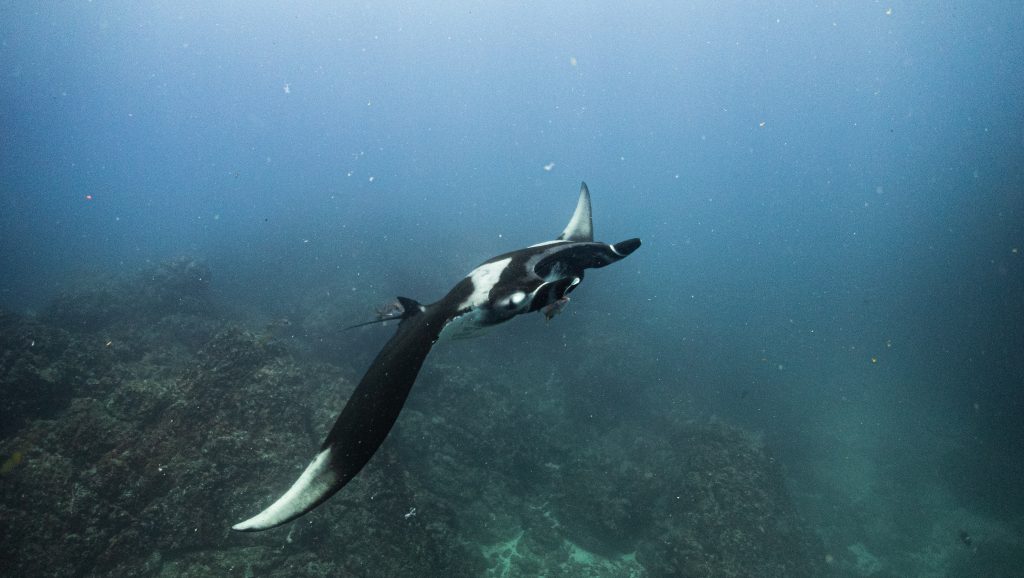
The island’s strategic location along Pacific Ocean currents makes it a crucial migratory route for various marine species. During certain seasons, lucky divers may encounter turtles, stingrays, and even humpback whales passing through.
Diving at Caño Island offers a variety of memorable experiences at its renowned dive sites. Shark Cave is notable for its white tip reef sharks, while Devil’s Pinnacle features rock formations up to 45 meters deep and frequent sightings of giant manta rays. The Shipwreck, despite its name, is a hotspot for observing scorpion fish and other fascinating marine life. The Garden is celebrated for its vibrant coral reefs teeming with schools of fish, turtles, and whitetip sharks.
Diving conditions at Caño Island vary, with visibility ranging from 10 to 90 feet and depths from 30 to 80 feet. Water temperatures typically range from 70°F to 80°F, with moderate currents and small waves present, particularly strong at Bajo del Diablo.
Three interesting facts about Caño Island:
- The island’s waters are home to over 70 native marine species, including white tip reef sharks, jacks, eagle rays, and moray eels.
- Caño Island’s underwater landscape includes rocky formations and sandy bottoms, providing diverse habitats for marine life.
- Humpback whales can sometimes be spotted around the island from August to October during their migratory season.
The best time to visit Caño Island for diving is from December to May, when conditions are optimal for underwater exploration. Traveling to the island is typically done via boat tours departing from Uvita, a journey that takes about 70 minutes. It’s essential to choose a tour operator with experience navigating the open sea to ensure a safe and enjoyable trip.
Caño Island stands out not only for its exceptional diving opportunities but also for its role in preserving Costa Rica’s marine biodiversity, making it a must-visit destination for divers seeking adventure and natural beauty.
Diving at Golfito and Golfo Dulce
Nestled on the southern Pacific coast of Costa Rica, Golfito is a charming town known for its lush rainforests, tranquil beaches, and rich biodiversity. Beyond its natural beauty on land, Golfito is a gateway to some of the most exhilarating underwater adventures in the Golfo Dulce.
Diving Adventures Await
Golfito offers a variety of diving experiences, from vibrant reef diving to thrilling wreck exploration. Here’s a closer look at what you can expect:
Reef Diving
The coral reefs of Golfo Dulce are alive with color and activity. Divers can expect to see a wide range of marine life, from the tiniest nudibranchs to large visitors like sharks and rays. If you’re lucky, you might even spot a majestic whale shark. Our reef diving trips are designed to showcase the best of this underwater paradise.
Wreck Diving
Known as the wreck diving capital of Costa Rica, Golfito is home to several fascinating shipwrecks. These sites, which lie at depths between 60 feet (18 meters) and 90 feet (27 meters), include medium cargo vessels and sailboats. For those keen on exploring these underwater relics, we offer specialized wreck diving packages and courses that teach safety and navigation techniques.
Fun Facts About Diving in Golfito
- Whale Shark Encounters: Golfo Dulce is one of the few places where divers have the chance to see whale sharks, especially during their migration seasons.
- Diverse Marine Life: The reefs here are home to over 200 species of fish and a variety of other marine creatures, making every dive a unique experience.
- Historic Wrecks: Some of the wrecks in Golfo Dulce have historical significance, providing an intriguing glimpse into the past for divers and underwater archaeologists alike.
Tips for Getting to Golfito
- By Air: The quickest way to reach Golfito is by taking a domestic flight from San José to Golfito Airport. The flight takes about an hour.
- By Car: For a scenic road trip, you can drive from San José to Golfito. The journey takes approximately 6-7 hours, passing through beautiful landscapes and small towns.
- By Bus: Regular bus services run from San José to Golfito, offering an affordable and comfortable travel option. The trip typically takes around 8 hours.
Whether you’re an experienced diver or a beginner, Golfito offers an unforgettable diving experience. Book your adventure today and dive into the wonders of Golfo Dulce!
Diving at Cocos Island National Park
I have had the opportunity to visit Cocos Island several times as a research assistant on various projects, and I can confidently say it is one of the most beautiful places on Earth. While I haven’t explored every corner of the globe, Cocos Island certainly feels like it could be. Situated approximately 300 miles off the Pacific coast of Costa Rica, Cocos Island is celebrated globally as an extraordinary diving destination and a breathtaking national park. This uninhabited paradise is draped in dense jungle and can only be accessed via multi-day expeditions aboard liveaboard vessels. Its status as a UNESCO World Heritage site underscores its significance as a vital wetland of international importance.
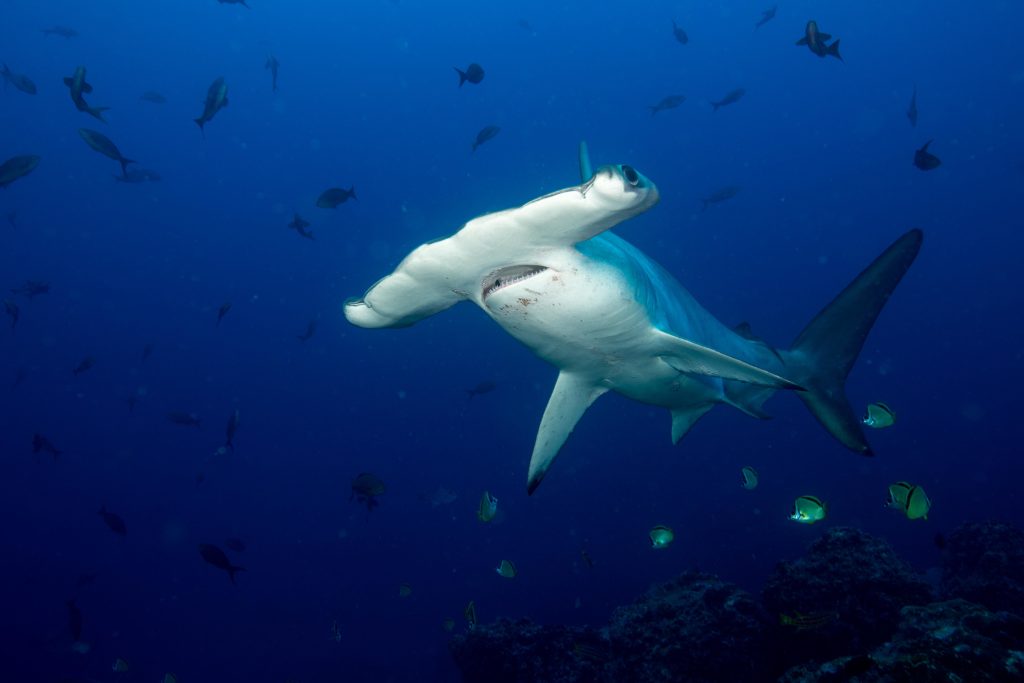
Here are five intriguing facts about Cocos Island:
- Pirate Legends: Cocos Island is steeped in pirate lore, with tales of vast treasures purportedly hidden amidst its lush forests and rocky cliffs. This enigmatic allure has fascinated adventurers for centuries.
- Jurassic Park Inspiration: The rugged landscapes and untouched beauty of Cocos Island inspired the fictional Isla Sorna in the movie “Jurassic Park,” showcasing its cinematic charm and natural splendor.
- Shark Haven: Diving at Cocos Island offers unparalleled encounters with large marine predators, including hammerhead sharks, tiger sharks, and the unique red-lipped batfish. It’s a paradise for shark enthusiasts and underwater photographers alike.
- UNESCO Recognition: Designated a UNESCO World Heritage site in 1997, Cocos Island is celebrated for its exceptional natural beauty and biodiversity, solidifying its status as a global treasure deserving of protection.
- Year-Round Diving: Whether during the dry season from December to April, with calmer seas, or the rainy season from May to November, offering stronger currents and richer marine life sightings, every visit promises unique diving experiences in this underwater wonderland.
Diving conditions at Cocos Island are tailored for experienced divers, with depths ranging from 18 to 30 meters (60-100 feet) and water temperatures averaging 24 to 29°C (75-84°F). The island’s remote location necessitates careful planning, including obtaining special permits and preparing for sea conditions during the journey from Puntarenas.
Renowned oceanographer Jacques Cousteau famously lauded Cocos Island as the pinnacle of diving destinations, underscoring its appeal to marine enthusiasts and adventurers seeking an unforgettable underwater adventure. Whether you’re intrigued by its pirate legends, cinematic ties, or diverse marine life, Cocos Island guarantees an unparalleled diving expedition amidst pristine natural surroundings.
Scuba Diving on the Caribbean Coast of Costa Rica
Scuba diving on the Caribbean coast of Costa Rica offers a unique and vibrant underwater experience. The warm, clear waters are teeming with colorful coral reefs, diverse marine life, and fascinating underwater landscapes. Popular dive spots include Cahuita and Puerto Viejo, where divers can explore an array of coral formations and encounter a variety of sea creatures.
The coral reefs in this region are among the most diverse in Costa Rica, showcasing a kaleidoscope of colors and marine species. These reefs are part of the larger Mesoamerican Barrier Reef System, the second-largest barrier reef in the world. Divers can expect to see a stunning variety of hard and soft corals, sponges, and sea fans, creating a complex and vibrant underwater ecosystem.
Interesting Facts:
- Lionfish Invasion: The Caribbean waters of Costa Rica have been impacted by the invasive lionfish species. Divers often encounter these beautiful yet harmful creatures, which have no natural predators in these ecosystems, posing a threat to native marine life.
- Archaeological Importance: Off the coast of Cahuita National Park lies a significant archaeological site submerged underwater. Divers can explore remnants of pre-Columbian artifacts and structures, offering a unique blend of diving and historical exploration.
- Shipwrecks and Maritime History: The Caribbean coast harbors several shipwrecks that serve as artificial reefs, attracting diverse marine species and offering thrilling exploration opportunities for wreck diving enthusiasts.
- Unique Coral Varieties: The coral reefs of Cahuita National Park are home to a variety of coral species, including brain corals and staghorn corals, which contribute to the vibrant marine ecosystem and offer spectacular sights for divers.
- Marine Conservation Efforts: Local organizations and dive operators are actively involved in marine conservation initiatives along the Caribbean coast. Divers can participate in coral restoration projects and lionfish control efforts, contributing to the preservation of these fragile underwater ecosystems.
Diving at Gandoca Manzanillo Wildlife Refuge
Scuba diving at the Gandoca Manzanillo Wildlife Refuge offers a chance to explore a protected and pristine marine environment. This refuge, located at the southeastern tip of Costa Rica’s Caribbean coast, is known for its untouched coral reefs, mangroves, and abundant marine life. The refuge’s conservation efforts ensure a rich and diverse underwater ecosystem for divers to enjoy.
The waters of Gandoca Manzanillo are exceptionally clear, providing excellent visibility for underwater exploration. Divers can navigate through intricate coral formations, swim alongside schools of tropical fish, and explore the seagrass beds that are vital feeding grounds for many marine species. The refuge also protects important mangrove habitats, which are crucial for the life cycle of many marine organisms.
Interesting Facts:
- Protected Area: Gandoca Manzanillo is a protected area, ensuring that its marine ecosystems remain vibrant and relatively untouched by human activity. The refuge’s status helps preserve the natural beauty and ecological integrity of the area, making it a prime location for eco-conscious divers.
- Unique Species: Divers may encounter rare species such as the manatee, which is a highlight for many scuba enthusiasts. The refuge is one of the few places in Costa Rica where manatees can be seen, often grazing in the seagrass beds.
- Varied Habitats: The refuge includes a variety of habitats, from coral reefs to seagrass beds and mangrove forests, providing a diverse diving experience. Each habitat supports different species and ecological interactions, offering divers a comprehensive view of the region’s marine biodiversity.
Diving at Isla Uvita Limón Costa Rica
Located just 1.4 kilometers off the coast of Puerto Limón on Costa Rica’s Caribbean side, Isla Uvita beckons divers with its rich blend of historical intrigue and vibrant marine ecosystems. Legend has it that Isla Uvita was the first landfall of Christopher Columbus in Costa Rica, adding a layer of historical significance to its waters.
As you descend beneath the crystal-clear Caribbean waters, you’ll have the opportunity to explore not only its rich marine life but also remnants of the past—two sunken shipwrecks, including the Phoenix. The Phoenix, now a thriving coral reef, teems with tropical fish, eels, urchins, and a variety of hard and soft corals, creating a mesmerizing underwater landscape.
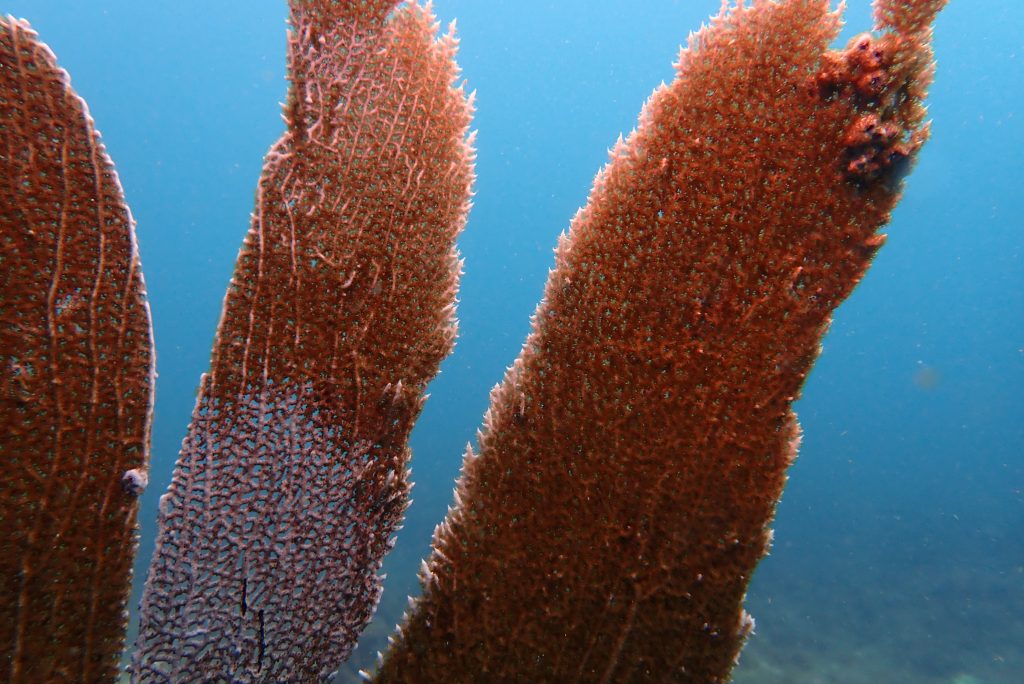
Diving on Isla Uvita isn’t just about witnessing the natural beauty of its coral reefs and marine life; it’s also a journey through time. The sunken wrecks serve as captivating dive sites, where coral formations have grown over decades, providing shelter and sustenance for an array of marine species. Imagine diving in waters where Christopher Columbus may have anchored his ship centuries ago—a historical immersion that adds a unique allure to every dive experience.
To reach Isla Uvita, you can opt for various transportation options from Puerto Limón, ensuring accessibility despite its historical and ecological significance. Whether you’re a seasoned diver or a curious explorer, Isla Uvita promises an unforgettable underwater adventure filled with discoveries both natural and historical.
Fun Facts About Isla Uvita:
- Historical Significance: Isla Uvita is believed by some to be the first landfall of Christopher Columbus in Costa Rica during his voyage to the Americas, adding a layer of historical intrigue to its waters.
- Marine Biodiversity: The waters surrounding Isla Uvita are home to a diverse array of marine life, including tropical fish, eels, urchins, and various species of hard and soft corals, making it a haven for underwater photography enthusiasts.
- Shipwrecks: The island boasts two notable shipwrecks, including the Phoenix, which has transformed into a thriving coral reef over the years, providing habitat for numerous marine species and offering unique diving opportunities.
- Clear Waters: Isla Uvita is renowned for its crystal-clear waters, which enhance visibility for divers exploring its vibrant underwater landscapes and historical artifacts.
- Accessibility: Despite its historical and ecological significance, Isla Uvita remains relatively accessible from Puerto Limón, making it a popular destination for both local divers and international visitors seeking an off-the-beaten-path diving experience on Costa Rica’s Caribbean coast.
This content provides a cohesive narrative about Isla Uvita, highlighting its historical context, diving attractions, and interesting facts, making it informative and engaging for readers interested in exploring Costa Rica’s underwater treasures.
What is the best time to dive in Costa Rica?
When it comes to scuba diving in Costa Rica, there’s a common question that often arises about the rainy season. Many wonder whether it’s worth planning a diving trip during this time or if it would be better to avoid it altogether. Let’s set the record straight: yes, it does rain during the rainy season, but that doesn’t mean diving here is off-limits.
In fact, diving in Costa Rica during the rainy season can be surprisingly rewarding, depending on where you choose to dive. Along the coastal areas, heavy rainfall can reduce visibility significantly, which may not make for ideal diving conditions. However, islands situated further offshore present a different story altogether. Places like Isla del Caño, located about an hour away from the mainland, actually become more enticing during this period.
From personal experience, some of the most spectacular dives and encounters with abundant marine life have occurred during the rainy season. While sites like Marino Ballena might not offer optimal conditions due to reduced visibility, Isla del Caño and other remote islands can provide exceptional diving opportunities with clearer waters and thriving marine ecosystems.
In the case of Isla del Coco, renowned for its shark sightings, the best time to visit is actually during the rainy season. This period cools the waters, attracting more sharks to the area, creating thrilling dive experiences for enthusiasts.
It’s important to note that Isla del Caño is more influenced by swells and waves than by rainfall, although these do tend to increase during the rainy season. The island remains a fantastic diving destination year-round, but divers should consider these factors when planning their visit.
So, when is the best time to dive in Costa Rica? The answer isn’t limited to a specific season but rather hinges on thoughtful planning and choosing the right dive sites. By selecting destinations away from the mainland during the rainy season, divers can enjoy remarkable underwater experiences amidst lush marine environments.
Don’t let the rain deter you from exploring Costa Rica’s underwater treasures. With careful consideration and strategic planning, diving here can be an unforgettable adventure regardless of the weather. Hopefully, this sheds light on the potential of diving in Costa Rica during the rainy season. If you have more questions or need further advice, feel free to ask!
What can you see in Costa Rica while diving?
Costa Rica is renowned for its diverse wildlife and stunning flora, both on land and beneath the waves. Here, I’ll highlight some of the captivating animal species you can encounter while scuba diving in Costa Rica.
Sea Turtles: Costa Rica serves as a vital nesting site for various sea turtle species including the Olive Ridley, Hawksbill, and Green turtles. Witness these graceful creatures navigating the waters or observe their nesting rituals on the beaches.
Reef Sharks: Several species of reef sharks, such as the Whitetip and Blacktip reef sharks, patrol the coral reefs, adding thrill and awe to your dives. These sharks are among our favorites and play a crucial role in maintaining marine ecosystems. Protecting them is essential for the health of our oceans.
Manta Rays: Encounter majestic manta rays with their impressive wingspans gracefully gliding through Costa Rica’s waters, showcasing their elegant movements.
Dolphins: Playful Bottlenose and Spinner dolphins frequent Costa Rica’s waters, offering opportunities to swim alongside these intelligent marine mammals.
Moray Eels: Elusive moray eels with their long bodies and sharp teeth hide in crevices or coral formations, fascinating divers with their secretive behavior.
Humpback Whales: From December to April, migrating humpback whales enchant divers with spectacular breaches and haunting songs, making for awe-inspiring underwater encounters.
Hammerhead Sharks: Costa Rica’s waters are also home to Hammerhead sharks, known for their distinctive head shape and schooling behavior. Spotting a school of Hammerheads is a thrilling experience for any diver.
Octopuses: These intelligent creatures, known for their ability to change color and texture, can be found camouflaged among rocks and coral reefs, demonstrating their remarkable adaptability.
Barracudas: Sleek and silvery barracudas are common sightings in Costa Rica’s waters, often seen patrolling the reefs in search of prey.
Nurse Sharks: Encounter nurse sharks resting on the sandy bottoms or swimming gracefully near the reefs. These docile sharks are an important part of the ecosystem and deserve our protection.
These examples showcase the incredible marine life awaiting you in Costa Rica’s waters. Each species plays a unique role in maintaining the balance of underwater ecosystems. As divers and stewards of the ocean, it’s our responsibility to appreciate and protect these creatures for future generations. If you have any questions or need more information, feel free to ask!
Final thoughts
I hope this guide has provided you with all the information and tips needed to explore the incredible dive sites that Costa Rica has to offer. From the vibrant reefs of Golfo Dulce to the fascinating wrecks, this country is a paradise for divers of all levels.
Each dive here is an opportunity to discover the beauty and diversity of the underwater world. My wish is that you use this guide to plan your adventures safely and excitingly, always with a deep respect for our precious marine environment.
Happy diving, and may you enjoy every moment underwater!

As a Costa Rican diving instructor, I’ve had the privilege of exploring nearly all of my country’s underwater treasures, including the incredible Isla del Coco. After spending a decade guiding diving tours and sharing my love for the ocean, I co-founded a dive center that has grown into one of the most respected in Costa Rica. Together with my brother, we also launched Saltwater Connection, an online travel agency focused on marine adventures. Beyond Costa Rica, I’ve been fortunate to dive around the world, and when I’m not underwater, I find peace in sailing. One of my greatest joys is to show visitors the beauty of Costa Rica, offering them a fresh and unique perspective.
